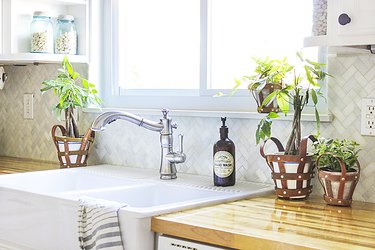Do you feel sad when leather belts become unusable due to breakage, wear, or (saddest of all) weight gain? Don't fret; this DIY gives you a second use for them as cool-looking leather planters, because, let's face it, once just isn't enough.

Things You'll Need
2 to 3 leather belts (more for a larger pot)
Scissors
Leather rotary hole punch, with punch sizes 2.0 mm
Rivets, medium size (amount varies per pot size)
Rivet setter
Hammer
Planter pot
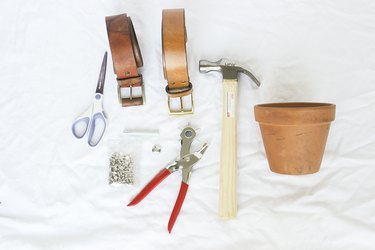
Step 1: Cut Belts Into Strips and Cut to Size
Using scissors, cut the buckle end off of the leather belts. Then cut the belts in half lengthwise so they are about 1-inch wide strips. If the belt has stitching on the edges, carefully trim off the stitching and separate the leather by pulling it apart. This will give you double the amount of usable leather.
With the planter pot upside down, wrap a leather strip around the top or widest part of the pot. Let the strip overlap loosely, a little over 1 inch, and cut off the rest. Do the same thing for the middle of the pot and again for the bottom.
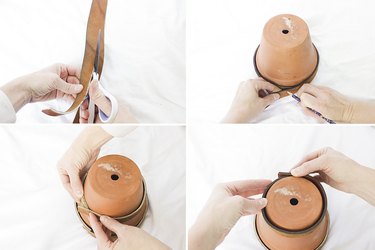
Step 2: Punch Holes and Attach Rivets
Set the leather hole punch to the 2.0mm hole size, overlap the ends of each leather strip so the overlap is only 1/2 to 3/4 inch from the ends, and punch holes through both overlapped pieces. This will allow the strips to fit loosely at first, and when the additional leather support straps are added, it won't be too tight around the planter pot.
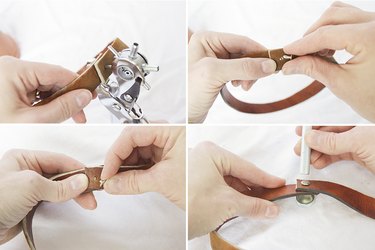
Attach rivets by placing a medium-size rivet through the overlapped holes, and placing a rivet-back on the other side. Place the rivet on the rivet anvil so the rivet-back is facing up, then place the rivet setter on top, and hammer the rivet closed (two to three good hits should be sufficient).
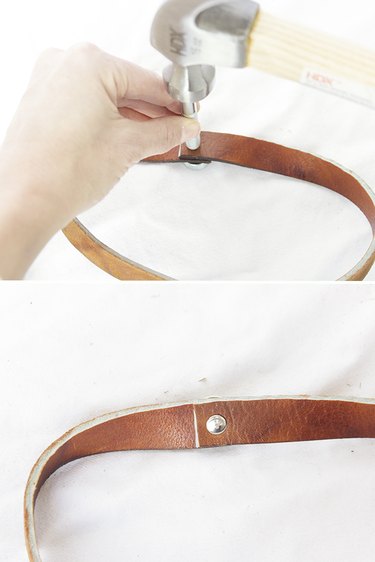
Step 3: Cut & Attach Cross Support Straps
Measure and cut a leather strip long enough to run from the leather circle on the top of the pot, through the middle and under the bottom circle, ending up on the opposite side at the top of the pot. Cut another leather strip going the opposite direction, crisscrossing the two strips on the bottom of the pot. Make sure there is enough overlap on the sides so that a rivet can attach the strips to the top circle. These will be the cross support straps.
Slide the support straps underneath the three leather circles, again crisscrossing the two straps on the bottom of the pot, and mark their intersection points on each circle so you know where to line them up when punching holes and attaching the rivets.
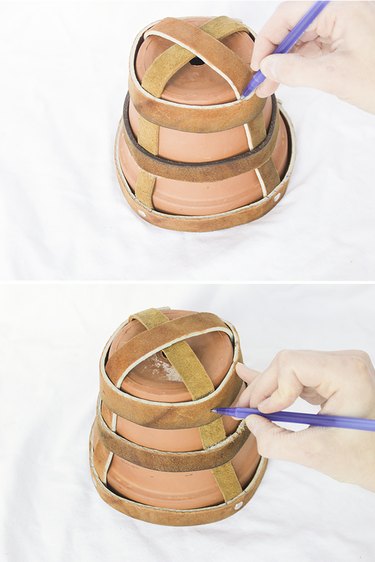
Remove the straps and circles from the planter pot, line up one of the strips on the intersection marks that you made, making sure the support strap runs along the inside of the leather circles, and punch holes at the marked points. Only do one side (three holes) at a time. Attach rivets with the rivet setter. Repeat for the other support strap.

Step 4: Attach the Handles
Cut two pieces of leather strips (one for each side) that runs from the inside of the bottom circle, inside of the middle circle, moves to the outside of the top circle at the top of the pot, leaves about a 6-inch loop for the handle, and then runs back over the top circle and inside the middle and bottom circles. Mark the intersection points where holes will need to be punched. Attach rivets at the marked points with the rivet setter.

Optional: Make a Smaller Size Planter Holder
For a smaller planter holder, use 1/2-inch wide leather strips, small size rivets, and only create leather circles for the bottom and top of the pot. Follow the instructions above for the remaining steps.

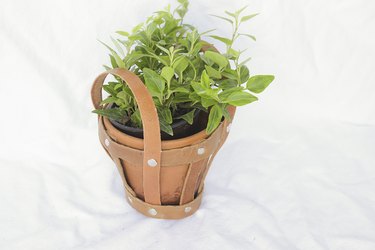
These cute planter holders can be used with the same pots you used when making them, or easily switched out with similar sized pots.
Video of the Day

